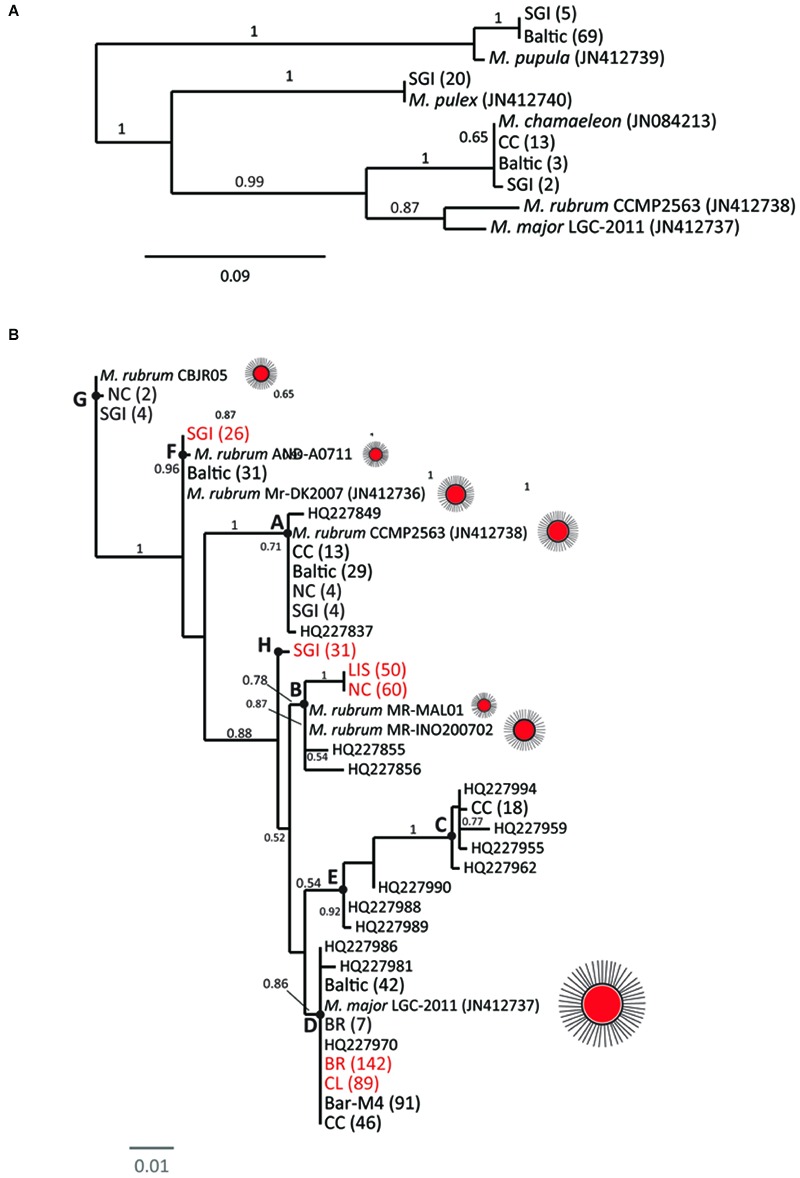FIGURE 1.

Maximum likelihood phylogenies of the Mesodiniidae using Mesodinium spp. sequences from 10 global locations: the Baltic Sea (stations GF-LL3a, GF-XVI, TV are grouped together in this figure), Barents Sea (Bar-M4), California Current (CC), St George Island (SGI) harbor, coastal Chile (CL), coastal Brazil (BR), Long Island Sound (LIS), and coastal North Carolina (NC). Phylogeny of the Mesodiniide based on a sequence, composed of a partial SSU rRNA, internally transcribed spacer region (ITS), and a partial region of the LSU rRNA gene. (A) Phylogeny of the Mesodiniidae, focusing on community sequences related to M. chamaeleon and heterotrophic Mesodinium spp. (B) Phylogeny of the M. major/rubrum complex. Letters on branches of tree (A–H) refer to variants within the complex, and cartoons of the ciliates (oral view) depict the relative cell size of various isolates (Table 3). Red text is used for genotypes dominating bloom samples and numbers in parentheses refer to the number of clones representing each genotype.
